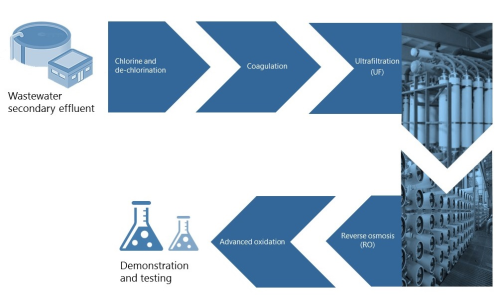
In an effort to diversify its water supply, while also reducing its dependency on imported water, Padre Dam Municipal Water District is embarking on an advanced water treatment plant project to explore a new source of water in Santee, California.
A demonstration project, funded by a grant, will result in the construction and installation of a indirect potable reuse facility, utilizing advanced water purification technologies. The treatment process will include: chlorine disinfection, coagulation, ultrafiltration, reverse osmosis and advanced oxidation.
Turnkey design
Biwater will provide a complete turnkey design, and supply and commission all process, mechanical, electrical and control components for the plant.The project is to include: Field pumps, a chlorine contactor, chemical dosing systems, ultrafiltration system, reverse osmosis system, advanced oxidation process system (using ultraviolet light (UV) and oxidation), programmable logic controller (PLC) and instrumentation, motor control centres and electrical panels.
The new facility will treat secondary effluent from a wastewater treatment plant in the District, and the treated water will be used for demonstration and testing purposes, to ensure it meets or exceeds the California Public Health Department’s draft regulations.
“This project will see the Padre Dam District set new benchmarks for water reuse, and enable it to create a reliable source of water, underpinning East San Diego County’s economy and future prosperity,” said Jorg Menningmann, President, Biwater Desalination and Membrane Treatment Sector.
Extending the project
Following commissioning, the demonstration project will run for a period of one year. In parallel, studies will continue to assess the capacity of Santee basin aquifer and the feasibility of extending the project beyond the demonstration and testing period, to serve a larger customer base in California.
After the testing period, the District hopes to be able to expand the facility, to construct a full-scale plant to provide up to 10 million gallons per day (US) of treated water with indirect potable reuse potential. With the necessary approvals to proceed, treated water would be injected into the local groundwater basin. It would undergo natural filtration, be withdrawn, treated again, and then distributed as potable water to customers.




